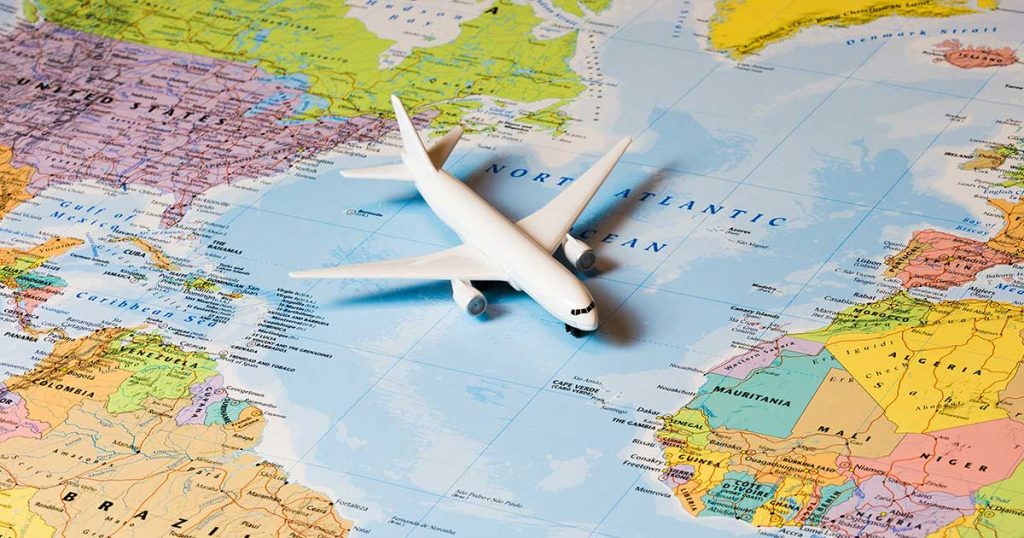Summer is here, and we tend to fly away from where we live… but aviation isn’t just about holidays – it also plays a crucial role in our interconnected world, connecting distant businesses and people, nations and cultures, people in need, and people who are willing to help.
However, the demand for air travel has raised concerns about its environmental impact, or to be more precise: about its carbon emissions. We enjoy traveling and getting further in hours than our ancestors did in years – and it seems like the majority is not ready to give up this new habit.
As a result, the search for alternative fuels has become imperative to mitigate aviation’s environmental footprint. The solution might be alternative fuels, but searching for new options is challenging. However, there are promising advancements too.
The European Union has been a trailblazer in finding the right solutions with its ReFuelEU Aviation regulation that aims to reduce the aviation sector’s environmental footprint significantly and facilitate the achievement of the EU’s climate targets.
The EU’s proposal outlines several vital requirements and goals, such as a gradual increase in sustainable fuel supply so European airports must progressively augment the share of sustainable aviation fuels they distribute from 2% (from 2025) to 70% (by 2050) or introducing a so-called Union Labelling System to inform consumers about aircraft operators’ use of sustainable aviation fuels and to encourage informed choices and promote sustainable traveling.
The path from kerosene to…
Currently, the aviation industry relies on conventional fossil fuels, primarily jet fuel (a.k.a. kerosene) derived from crude oil. As such, it contributes significantly to carbon dioxide emissions. Acknowledging its unsustainability, the demand for alternative fuels has intensified with the need to find an alternative (or more) with the potential to reduce carbon emissions and, if possible, to even enhance the environmental performance of the aviation sector.
… SAF
Sustainable Aviation Fuels (SAF), also known as bio-jet fuels, are produced from renewable resources such as corn grain, oil seeds, algae, fats, oils, and greases, agricultural residues, forestry residues, wood mill waste, municipal solid waste streams, wet wastes (manures, wastewater treatment sludge). SAF can be drop-in fuel, which can be used without significant modifications to existing aircraft and infrastructure. They can reduce greenhouse gas emissions compared to conventional jet fuel and lower sulfur and particulate matter emissions.
… hydrogen
Hydrogen has been a favorite as a versatile alternative fuel in the automotive industry and has excellent potential for aviation. When used in fuel cells, it produces electricity with only water vapor as a by-product. However, hydrogen faces storage, distribution, and infrastructure development challenges. Nevertheless, ongoing research and technological advancements hold promise for hydrogen-powered aviation in the future, mainly because H2 can be produced and consumed without creating CO2. At the same time, it’s easy to get it from water.
… electricity
Electric propulsion systems have gained attention recently due to their potential to reduce carbon emissions significantly. Electric aircraft, either fully electric or hybrid-electric, is a vast opportunity, offering the advantage of reduced noise pollution, among other benefits, in line with the EU ACARE strategy:

While electric aviation is currently limited to smaller aircraft for shorter distances, ongoing research and advancements in battery technology aim to overcome the limitations and expand the range of electric aircraft.
Despite the advancements, some challenges hinder the adoption of alternative fuels in aviation. Sustainable aviation fuels’ availability (as well as scalability) remains limited due to feedstock availability, production costs, and regulatory frameworks. Additionally, the limitations of current battery technology regarding energy density and charging times must be addressed for electric aviation. Another challenge we’ll need to address is the need for a dedicated global infrastructure for alternative fuels.
With continued support and investment, alternative fuels can re-revolutionize aviation and lead us to a future where air travel aligns with global sustainability goals.




